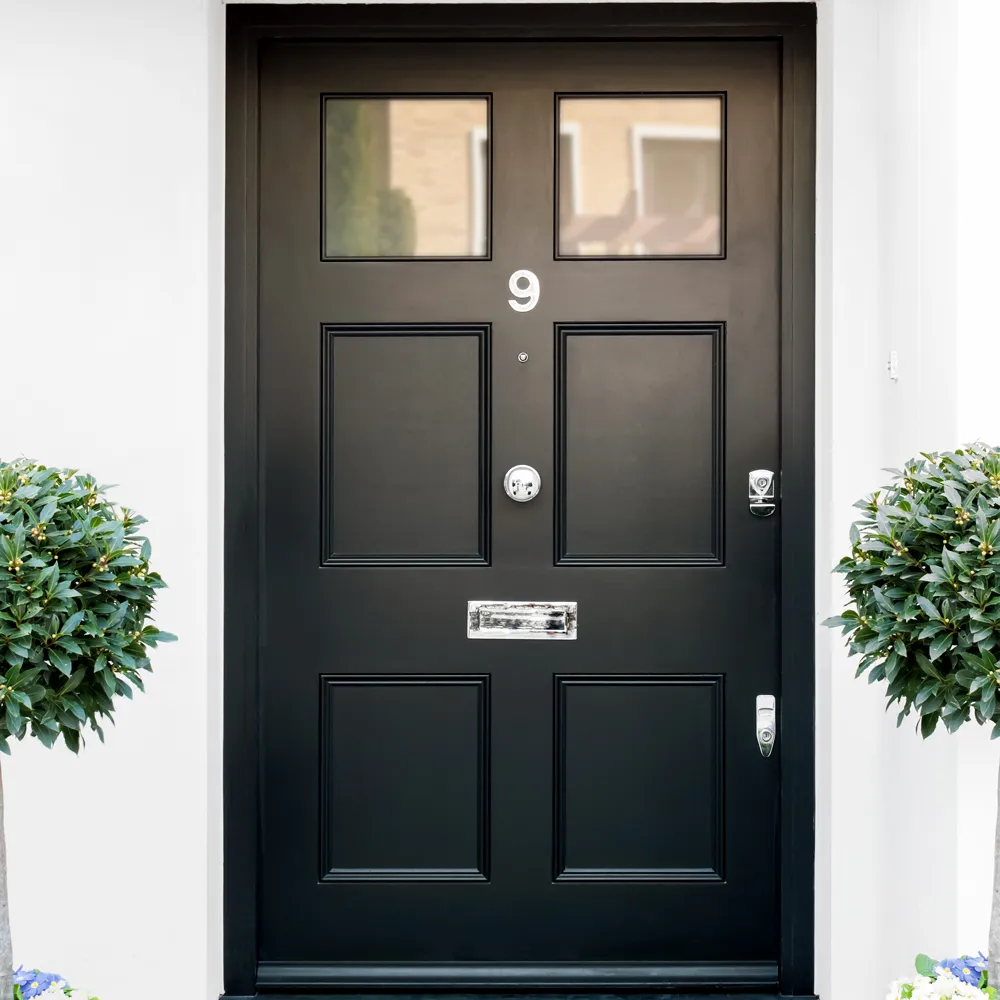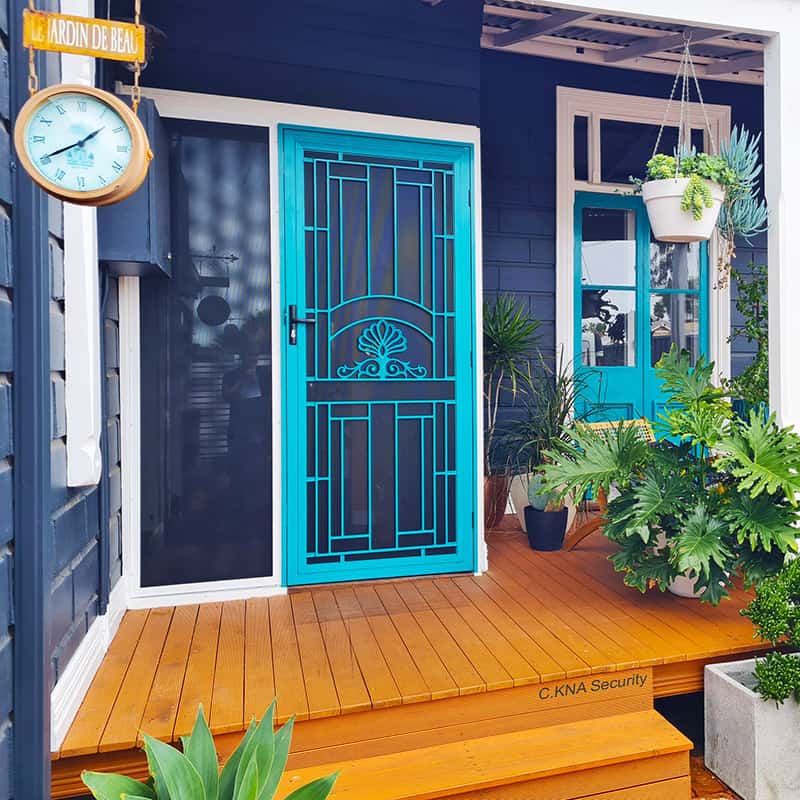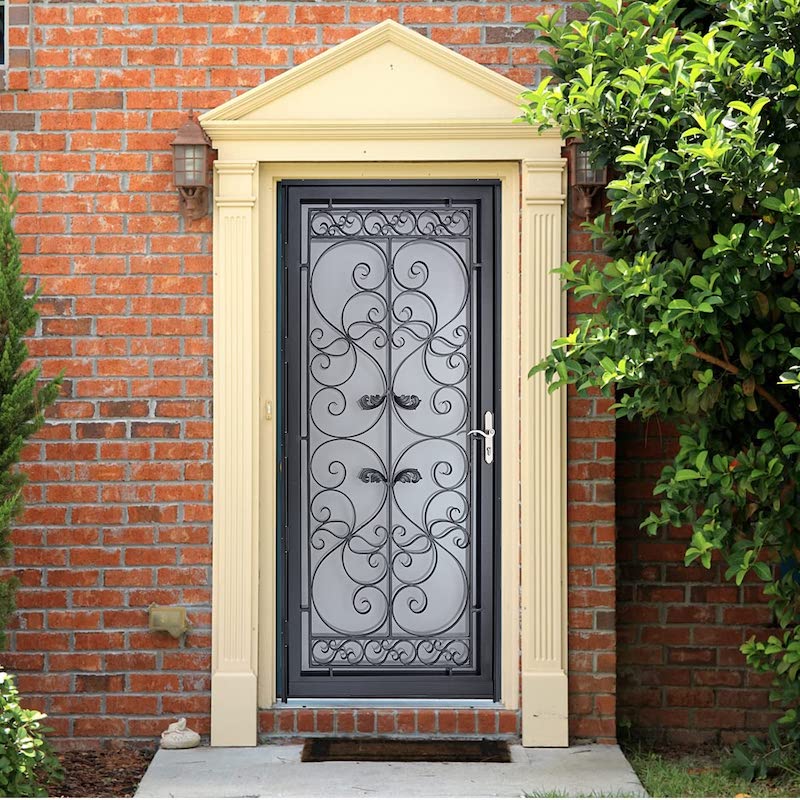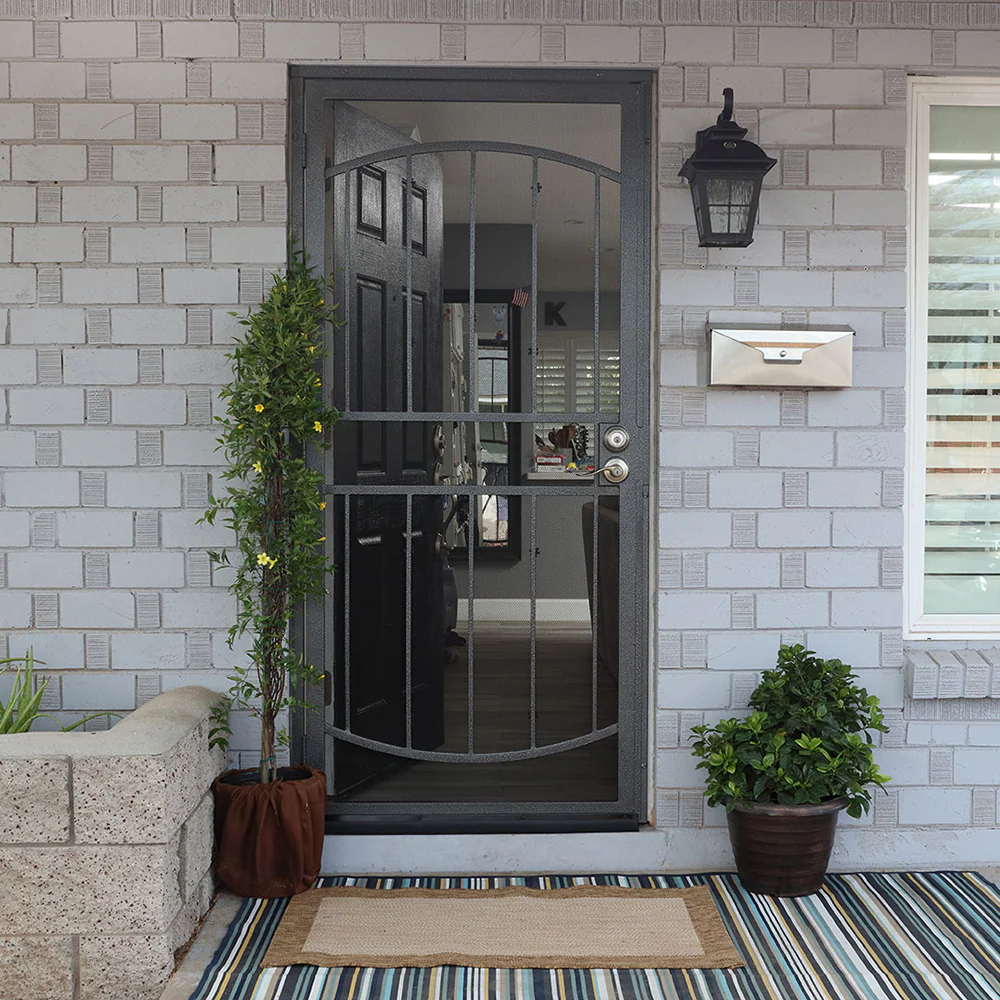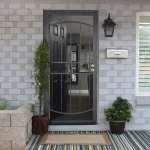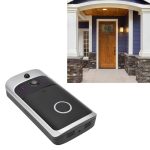Part 1: Introduction to Security Doors – A First Line of Defense for Your Home
Level 1: What Is a Security Door?
What is a security door? A security door is a specialized type of door designed to enhance the safety and protection of your home or business. Unlike standard entry doors, which primarily serve aesthetic and functional purposes, security doors are built with reinforced materials and advanced locking mechanisms to deter intruders and prevent unauthorized access. These doors act as a physical barrier between your property and potential threats, providing an additional layer of security.
- The Importance of Security Doors:
In today’s world, where break-ins and thefts are common concerns, having robust security measures in place is essential. According to crime statistics, a significant percentage of burglaries occur through forced entry at the front or back door. Installing a security door can significantly reduce this risk by creating a formidable obstacle for would-be intruders. - Why Choose a Security Door Over Other Solutions?
While traditional locks, alarms, and cameras offer some level of protection, they often lack the immediate physical deterrent provided by security doors. These doors not only reinforce your home’s defenses but also allow you to greet visitors safely without fully opening your main door. Additionally, many security doors are designed to complement your home’s architecture, ensuring they blend seamlessly with your decor.
Level 2: Key Features of Security Doors
Understanding what sets security doors apart highlights their importance in safeguarding your property.
- Reinforced Materials:
Most high-quality security doors are constructed from durable materials such as steel, aluminum, or wrought iron. These materials resist cutting, prying, and impact, making it difficult for intruders to breach the door. - Advanced Locking Systems:
Security doors often come equipped with multi-point locking systems, deadbolts, and anti-tamper mechanisms. These features ensure that the door remains securely fastened even under significant force.
Part 2: Types of Security Doors – Exploring Options for Every Need
Level 1: Popular Categories of Security Doors
Security doors come in various designs and configurations, each catering to different needs and preferences. Below are some of the most common types:
- Steel Security Doors:
Steel security doors are among the strongest and most durable options available. They are typically made from heavy-gauge steel and feature welded frames for added strength. These doors are ideal for homeowners looking for maximum protection against forced entry. - Aluminum Security Doors:
Aluminum doors strike a balance between strength and weight. They are corrosion-resistant, making them suitable for coastal areas or regions with high humidity. Aluminum doors also offer sleek, modern aesthetics that appeal to contemporary homeowners.
Level 2: Specialty Models for Unique Requirements
Beyond mainstream offerings, specialty security doors address niche markets or specific challenges.
- Retractable Security Doors:
These doors roll up into a housing unit when not in use, preserving the appearance of your entryway. Retractable models are perfect for those who value flexibility and minimalism while still maintaining security. - Decorative Security Doors:
For homeowners who prioritize aesthetics, decorative security doors combine ornate designs with robust construction. These doors often feature intricate patterns or glass inserts, adding a touch of elegance while keeping your home secure.
Part 3: How Security Doors Enhance Safety – Beyond Physical Protection
Level 1: Encouraging Comprehensive Security Measures
Security doors play a vital role in creating a holistic approach to home safety, addressing vulnerabilities that might otherwise be overlooked.
- Deterring Intrusions:
A visible security door sends a strong message to potential intruders that your home is well-protected. The added barrier makes it harder for criminals to gain access quickly, giving you time to respond or alert authorities. - Improving Natural Ventilation:
Unlike solid doors, many security doors allow fresh air to circulate throughout your home while keeping intruders and pests out. This feature is especially beneficial during warmer months or in regions with mild climates.
Level 2: Supporting Energy Efficiency and Comfort
Beyond physical protection, security doors contribute to fostering energy efficiency and enhancing daily living experiences.
- Reducing Utility Costs:
By enabling natural ventilation, security doors help lower electricity bills associated with air conditioning. Additionally, reflective coatings or tinted finishes can reduce heat transfer, further stabilizing indoor temperatures. - Minimizing Pest Infestations:
Many security doors are equipped with fine mesh screens that prevent insects, rodents, and other pests from entering your home. This reduces the need for chemical repellents and creates a healthier environment for your family.
Part 4: Practical Considerations – Choosing and Installing Security Doors
Level 1: Tips for Selecting the Right Security Door
With so many variations available, choosing the perfect security door requires thoughtful consideration of several factors.
- Compatibility with Your Entryway:
Before purchasing a security door, measure your doorway carefully to ensure a proper fit. Custom-sized doors may be necessary for older homes or unique architectural designs. - Budget and Long-Term Value:
While budget-friendly options may seem appealing, investing in a higher-quality door often pays off in the long run. Premium models are less likely to require frequent repairs or replacements, saving money over time.
Level 2: Installation and Maintenance Guidelines
Proper installation and care ensure your security door remains functional and reliable over time.
- Professional vs. DIY Installation:
For complex installations involving custom measurements or advanced features, hiring a professional ensures precision and optimal performance. However, simpler models can often be installed using manufacturer-provided instructions. - Routine Cleaning and Inspection:
Regularly clean the door with mild soap and water to remove dirt and debris. Inspect the frame, hinges, and locking mechanism periodically for signs of wear or damage. Lubricate moving parts as needed to maintain smooth operation.
Part 5: Behind the Scenes – The Making of Security Doors
Level 1: The Development Process
Creating security doors involves meticulous planning and execution to ensure functionality, durability, and aesthetic appeal.
- Concept Development:
Designers collaborate with engineers, material scientists, and end-users to develop concepts that balance visual impact with functional performance. Inspiration comes from observing consumer behavior, identifying market gaps, and experimenting with innovative finishes. - Testing and Refinement:
Once a prototype is developed, rigorous testing ensures consistency in texture, durability, and user satisfaction. Feedback loops refine the product until it meets the brand’s exacting standards.
Level 2: Manufacturing Techniques
Advanced manufacturing techniques enable brands to produce high-quality security doors at scale while maintaining precision and consistency.
- Material Selection and Treatment:
Premium materials like powder-coated steel, aluminum alloys, or PVC-coated mesh undergo stringent quality checks. Special treatments protect against fading, rusting, or warping, ensuring longevity. - Quality Assurance:
Final inspections include stress tests, finish evaluations, and dimensional checks to guarantee compliance with industry standards. Only products that pass all quality checks are approved for distribution, ensuring customer satisfaction.
Accessories That Enhance Your Security Door Experience
Level 1: Essential Accessories for Everyday Use
Certain accessories can significantly improve the functionality and enjoyment of your security door.
- Magnetic Door Closures:
Magnetic closures ensure the security door shuts securely every time, preventing drafts and unauthorized access. These devices are easy to install and highly effective. - Weather Stripping and Seals:
Apply weather stripping or seals around the edges of the door to enhance insulation and noise reduction. These additions improve energy efficiency and create a tighter seal against external elements.
Level 2: Creative Enhancements
Take your security door experience to the next level with these creative additions.
- Decorative Grilles and Inserts:
Add decorative grilles or glass inserts to personalize your door and complement your home’s architecture. This customization fosters ownership and pride among users. - Interactive Storytelling Tools:
Augmented reality apps or QR codes linked to multimedia content can enrich the door’s narrative, providing insights into its creation, history, and cultural significance.
By understanding what makes security doors exceptional, exploring diverse designs, leveraging expert tips, and embracing future innovations, you can fully unlock their potential. Whether you’re seeking affordability, craftsmanship, or symbolism, these doors offer endless possibilities—one step closer to achieving ultimate security and style!
